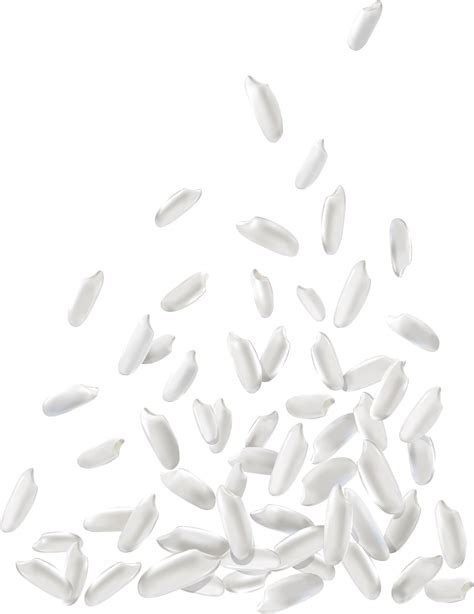
A mother’s simple hack involving a $2 pantry staple, specifically bay leaves, is gaining traction for its ability to elevate the flavor and aroma of ordinary rice, transforming it into a more fragrant and palatable dish.
Many home cooks seek ways to enhance their everyday meals without spending a fortune or investing excessive time and effort. One such method involves adding a couple of bay leaves to the rice while it cooks, a technique lauded by home cooks for its subtle yet noticeable improvement in the final product. Bay leaves, commonly used in soups, stews, and braises, impart a delicate, herbaceous flavor that complements the starchiness of rice.
The process is straightforward and requires minimal adjustments to standard rice-cooking procedures. Whether using a rice cooker or cooking rice on the stovetop, simply adding one or two bay leaves to the pot before the water simmers infuses the rice with a subtle, aromatic flavor. “It’s a game changer,” says one home cook who swears by this method, noting that it makes even the most basic rice taste significantly better.
This unassuming culinary tip has resonated with budget-conscious individuals and culinary enthusiasts alike, offering a simple and inexpensive way to enhance a staple food. The aromatic compounds released from the bay leaves during cooking subtly alter the rice’s flavor profile, adding a layer of complexity that elevates the overall dining experience.
The Science Behind the Flavor Enhancement
Bay leaves derive their distinctive aroma and flavor from a complex combination of volatile organic compounds, including eugenol, cineole, and myrcene. These compounds are released when the leaves are heated, permeating the rice with their unique characteristics.
- Eugenol: This compound contributes a clove-like, spicy note to the flavor profile. It is also found in cloves, cinnamon, and nutmeg, known for their warm, comforting aromas.
- Cineole (Eucalyptol): Cineole imparts a fresh, slightly medicinal, and eucalyptus-like aroma. It is a common component in many aromatic plants, including eucalyptus, rosemary, and sage.
- Myrcene: Myrcene provides a slightly woody, balsamic, and green aroma. It is also found in hops, bay rum tree, and cannabis, contributing to their distinctive scents.
When bay leaves are simmered in water, these volatile compounds are extracted and dispersed throughout the rice. The rice absorbs these compounds, resulting in a more complex and fragrant flavor profile. The subtle infusion enhances the rice without overpowering its inherent taste, making it a versatile complement to a wide range of dishes.
How to Incorporate Bay Leaves into Your Rice Cooking
Adding bay leaves to rice is a simple process that can be adapted to various cooking methods. Here’s a step-by-step guide:
- Choose Your Rice: This method works well with all types of rice, including white rice, brown rice, jasmine rice, basmati rice, and wild rice blends. The choice depends on your personal preference and the dish you plan to serve.
- Rinse the Rice: Before cooking, rinse the rice under cold water to remove excess starch. This helps prevent the rice from becoming sticky and improves its texture.
- Add Water and Bay Leaves: Place the rinsed rice in a pot or rice cooker, add the appropriate amount of water (usually a 2:1 water-to-rice ratio for white rice, and slightly more for brown rice), and add one or two bay leaves.
- Cook the Rice: Cook the rice according to the package instructions or your preferred method. For stovetop cooking, bring the water to a boil, then reduce the heat to low, cover the pot, and simmer until the water is absorbed (usually 15-20 minutes for white rice, and 40-45 minutes for brown rice). For a rice cooker, simply press the start button and let it do its job.
- Rest and Fluff: Once the rice is cooked, let it rest for 5-10 minutes with the lid on. This allows the steam to evenly distribute throughout the rice, resulting in a fluffier texture. Before serving, remove the bay leaves and fluff the rice with a fork.
Tips and Variations
- Adjust the Quantity: The number of bay leaves can be adjusted to suit your taste. Start with one bay leaf for a subtle flavor, and increase to two for a more pronounced aroma.
- Complementary Flavors: Experiment with other aromatics to enhance the flavor of the rice. Consider adding a clove of garlic, a small piece of ginger, or a pinch of saffron along with the bay leaves.
- Broth Instead of Water: For an even richer flavor, cook the rice in chicken broth or vegetable broth instead of water. This adds depth and complexity to the dish.
- Toast the Rice: Before adding water, toast the rice in a dry pan for a few minutes until it becomes fragrant. This enhances its nutty flavor.
- Use Fresh Bay Leaves Sparingly: Fresh bay leaves have a stronger flavor than dried ones, so use them sparingly. One fresh bay leaf is usually equivalent to two dried bay leaves.
The Economic and Practical Appeal
The popularity of this culinary hack stems from its affordability and ease of implementation. Bay leaves are a readily available and inexpensive pantry staple, making it accessible to a wide range of consumers. A package of bay leaves typically costs around $2, and a single leaf can flavor an entire pot of rice, making it an economical way to enhance meals.
Moreover, the simplicity of the method appeals to busy individuals who seek quick and easy ways to improve their cooking without spending hours in the kitchen. Adding bay leaves to rice requires minimal effort and time, making it a practical solution for everyday cooking.
Beyond Flavor: Potential Health Benefits
While primarily used for their flavor-enhancing properties, bay leaves also offer potential health benefits. They contain various vitamins, minerals, and antioxidants that contribute to overall well-being.
- Antioxidant Properties: Bay leaves are rich in antioxidants, which help protect the body against damage from free radicals. These antioxidants include flavonoids, polyphenols, and other phytonutrients.
- Anti-Inflammatory Effects: Compounds in bay leaves have been shown to possess anti-inflammatory properties. They can help reduce inflammation in the body, which is linked to various chronic diseases.
- Digestive Aid: Bay leaves have traditionally been used to aid digestion. They contain enzymes that help break down proteins and fats, promoting healthy digestion and reducing bloating and gas.
- Respiratory Health: The aroma of bay leaves can help clear nasal passages and relieve respiratory congestion. They have been used in traditional medicine to treat coughs, colds, and asthma.
- Blood Sugar Regulation: Some studies suggest that bay leaves may help regulate blood sugar levels. They contain compounds that improve insulin sensitivity and glucose metabolism.
However, it’s important to note that these potential health benefits are based on limited research, and more studies are needed to confirm these findings. Bay leaves should be consumed in moderation as part of a balanced diet.
Cultural Significance of Bay Leaves
Bay leaves have a rich history and cultural significance that spans across various civilizations. They have been used for culinary, medicinal, and symbolic purposes for centuries.
- Ancient Greece and Rome: In ancient Greece and Rome, bay leaves were associated with Apollo, the god of music, poetry, and light. They were used to crown victors, heroes, and scholars as a symbol of honor and achievement. Bay leaves were also believed to possess protective properties and were used to ward off evil spirits.
- Culinary Uses: Bay leaves have been used in cooking for centuries to add flavor and aroma to a wide range of dishes. They are a common ingredient in soups, stews, sauces, braises, and marinades. Bay leaves are particularly popular in Mediterranean, European, and Middle Eastern cuisine.
- Medicinal Uses: In traditional medicine, bay leaves have been used to treat various ailments, including digestive problems, respiratory infections, and skin conditions. They have been used as a natural remedy for coughs, colds, and flu. Bay leaf oil has also been used to relieve muscle pain and inflammation.
- Symbolic Meanings: Bay leaves have various symbolic meanings across different cultures. They are often associated with victory, success, honor, and protection. In some cultures, bay leaves are believed to bring good luck and ward off evil spirits. They are also used in rituals and ceremonies to purify spaces and promote positive energy.
Potential Risks and Considerations
While bay leaves are generally safe to consume, there are a few potential risks and considerations to keep in mind:
- Choking Hazard: Bay leaves are not easily digestible and can pose a choking hazard if swallowed whole. It’s important to remove the bay leaves from the dish before serving.
- Allergic Reactions: Although rare, some individuals may be allergic to bay leaves. Allergic reactions can range from mild skin irritation to more severe symptoms such as difficulty breathing. If you experience any allergic symptoms after consuming bay leaves, seek medical attention.
- Pregnancy and Breastfeeding: There is limited information about the safety of consuming large amounts of bay leaves during pregnancy and breastfeeding. It’s best to consult with a healthcare professional before using bay leaves in medicinal amounts during these periods.
- Coumarin Content: Bay leaves contain coumarin, a natural compound that can have blood-thinning effects. While the amount of coumarin in bay leaves is generally low, individuals taking blood-thinning medications should consume them in moderation.
- Confusion with Toxic Look-Alikes: It’s important to distinguish bay leaves from other leaves that may resemble them but are toxic. For example, cherry laurel leaves and mountain laurel leaves are poisonous and should not be consumed.
Conclusion
The simple addition of bay leaves to rice is a testament to how a small, inexpensive ingredient can significantly enhance the flavor and aroma of a staple food. This culinary hack, embraced by home cooks seeking to elevate their everyday meals, underscores the power of simple techniques in transforming ordinary dishes into something special. Beyond its flavor-enhancing properties, bay leaves also offer potential health benefits and cultural significance, making them a versatile and valuable addition to any kitchen. Whether you’re a seasoned chef or a novice cook, incorporating bay leaves into your rice cooking is a simple and effective way to add depth and complexity to your meals. The next time you prepare rice, consider adding a bay leaf or two and experience the subtle yet noticeable difference it makes. This method, passed down through generations, continues to be a favorite due to its simplicity, affordability, and the delightful enhancement it brings to a basic dish.
Frequently Asked Questions (FAQ)
-
What exactly does adding bay leaves do to the taste of rice?
Adding bay leaves to rice infuses it with a subtle, aromatic flavor. The bay leaves release volatile compounds like eugenol, cineole, and myrcene, which impart clove-like, fresh, and slightly woody notes, respectively. This enhances the overall flavor profile of the rice without overpowering it, making it more palatable and complementary to various dishes. As one home cook put it, “It’s a game changer,” making even basic rice taste significantly better.
-
How many bay leaves should I add to my rice, and does the type of rice matter?
Generally, one or two bay leaves are sufficient for a standard pot of rice (e.g., 2 cups of rice). You can adjust the quantity to suit your taste; start with one for a subtle flavor and increase to two for a more pronounced aroma. The type of rice does not significantly alter the amount of bay leaves needed, but consider that brown rice, which requires more water and a longer cooking time, may benefit from two bay leaves to ensure the flavor is adequately infused.
-
Can I use fresh bay leaves instead of dried ones, and how does it affect the flavor?
Yes, you can use fresh bay leaves, but they have a stronger flavor than dried ones. If using fresh bay leaves, use them sparingly; one fresh bay leaf is typically equivalent to two dried bay leaves. The flavor will be more intense and potentially more bitter if too much is used. Adjust the quantity based on your preference and taste test as you go.
-
Are there any risks associated with consuming bay leaves, and how can I avoid them?
While bay leaves are generally safe, there are a few risks. Firstly, bay leaves are not easily digestible and can be a choking hazard if swallowed whole. Always remove the bay leaves before serving. Secondly, although rare, some individuals may be allergic to bay leaves. Watch for any allergic reaction symptoms. Finally, bay leaves contain coumarin, which has blood-thinning effects, so those on blood-thinning medication should consume them in moderation. To avoid these risks, always remove the leaves before serving and consume in moderation if you have concerns about blood thinning.
-
Besides bay leaves, what other pantry staples can be used to enhance the flavor of rice?
Besides bay leaves, several other pantry staples can enhance the flavor of rice. Adding a clove of garlic or a small piece of ginger while cooking infuses the rice with a savory aroma. A pinch of saffron can add a vibrant color and a delicate floral flavor. Cooking the rice in chicken or vegetable broth instead of water adds depth and richness. Toasting the rice in a dry pan before adding water enhances its nutty flavor. Experimenting with different combinations can elevate your rice dishes in various ways.








